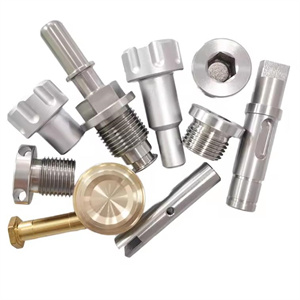CNC machined parts are widely used in the transportation industry, and their high precision, high efficiency, flexibility, and diverse processing capabilities make them an indispensable and important component of the industry. The following is a clear summary of the application of CNC Machined Parts in the transportation industry:
Overview of CNC Machined Parts
CNC Machined Parts are parts processed by computer numerical control (CNC) machine tools. CNC machine tools use preset programs to control the motion and cutting parameters of the machine tool, accurately process raw materials, and produce parts that meet design requirements. In the transportation industry, CNC Machined Parts are widely used in the production of various key components and precision components.
Specific Applications of CNC Machined Parts
Engine and power system
Core components: such as engine cylinder block, cylinder head, crankshaft, connecting rod, camshaft, etc. These components require extremely high precision and strength, and CNC machining technology can ensure that the size, shape, and surface quality of these components meet the design requirements, thereby improving the performance and reliability of the engine.
Precision components: Precision components in components such as fuel injection systems, ignition systems, and turbochargers are often manufactured using CNC machining technology. These components require high-precision machining to ensure their stability and durability under extreme working conditions.
Transmission and suspension system
Transmission components: such as gearbox gears, transmission shafts, differentials, etc. CNC machining technology can ensure the accuracy and clearance of these components, thereby improving the efficiency and reliability of the transmission system.
Suspension system: The control arms, shock absorber brackets, and other components in the suspension system are often manufactured using CNC machining technology. These components need to withstand complex mechanical loads, thus requiring extremely high precision and strength.
Body and chassis structure
Structural components: such as frame crossbeams, longitudinal beams, reinforcement plates, etc. These structural components need to withstand the overall weight of the vehicle and various dynamic loads, thus requiring extremely high precision and strength. CNC machining technology can ensure the dimensional and shape accuracy of these structural components, thereby improving the rigidity and safety of the vehicle body.
Connecting parts: Fasteners such as bolts, nuts, and pins are often manufactured using CNC machining technology. These connectors need to have high precision and reliability to ensure stable connections between various components of the vehicle body.
Interior and exterior decorations
Metal decorative parts: Although most parts in the interior and exterior are manufactured using injection molding, vacuum molding, and other processes, some metal decorative parts such as door handles and armrests are also often manufactured using CNC machining technology. These parts need to have a beautiful appearance and high surface quality.
Advantages and characteristics of CNC Machined Parts
High precision: CNC machining technology has extremely high machining accuracy, which can ensure that the dimensional accuracy and shape accuracy of the parts reach the micrometer level. This is particularly important for precision components in the transportation industry.
High efficiency: CNC machine tools can achieve automated production, reduce manual intervention, and improve production efficiency. Meanwhile, CNC machine tools can continuously process multiple parts, shortening the production cycle.
Flexibility: CNC machine tools have strong flexibility and can process parts of various shapes and sizes. By replacing cutting tools and fixtures, CNC machine tools can adapt to the production needs of different products.
Repeatability: The CNC machining process is controlled by computer programs and has a high degree of repeatability. This helps to ensure the consistency and stability of the parts, and improve the overall quality of the product.
